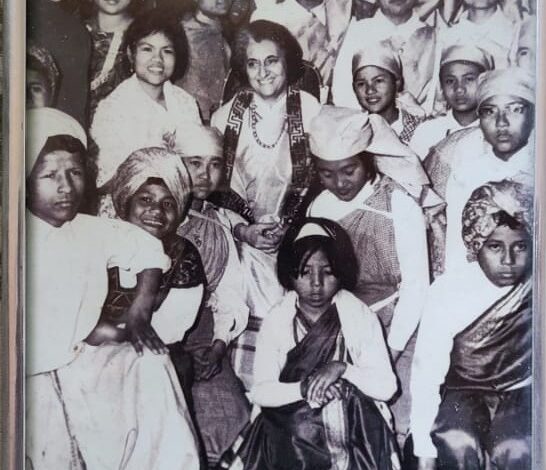Reminiscence of time & events leading to the statehood movement

Filtina Lyndem
In 1952, I was in class 9 studying in the Welsh Mission Girls High School and I remember vividly that I enrolled myself as a volunteer in the protest against the nomination of member or “MDC shu sieh”, in the United Khasi and Jaiῆtia Hills Autonomous District Council. While celebrating the Golden Year of Meghalaya, it is imperative for the people of the state to remember the important historical events which ultimately led to the formation of Meghalaya on January 21, 1972.
In 1923, the formation of Khasi National Dorbar was an important moment in the history whereby the idea and dream for self-rule began to take shape. When India became Independent on August 15, 1947, once again the Khasi people were confronted with two options, one, to remain independent and two, to accede to the Dominion of India. The former was too big a challenge for the smaller Khasi Native States. Therefore, we chose to accede to the Indian Union, and an Instrument of Accession was signed separately by the Khasi Syiems. Thus, the Khasi States Constitution Making Dorbar was held in 1949 to debate and decide the political future of the region.
In 1952, the United Khasi and Jaiῆtia Hills Autonomous District Council was inaugurated under the Sixth Schedule of the Constitution of India. The nomination of the non-indigenous member to the District Council, by the Assam Government enraged the Khasi people and eventually led to the protest movement under the leadership of Hoover Hynῆiewta, Molen Swer and others. Lest we forget the house of Molen Swer in Mawkhar Main Road, was the place where the think tank of the movement used to meet.
On the morning of June 27, 1952, a large public gathering was convened in the Hall of the Khasi National Dorbar at Mawkhar to protest against the nomination of non-indigenous member. It was on this day that many students like me came forward to sign and pledge as volunteers for the protest movement. I remember many youths from Riatsamthiah who signed were myself (Filtina Lyndem), Mera Malῆiang and others. From among the prominent leaders who took active part in the protest were Lina Adel Laloo and Kong Enit from Mission Compound, Moreen Lyngdoh, Plain R Mawthoh, L Gilbert Shullai, Stephen Lyngdoh, Markan Lyndem, Dr John Victor Diengdoh, Hamlet Bareh, Stetnel Shylla, Wattis War and many more.
The protest began from the Hall of the Khasi National Dorbar and proceeded towards Motphran where it was met with a heavy hand from the District Administration, and Perry who was the Deputy Commissioner gave an order to clamp down the protest. When the protesters resisted, the District Administration resorted to lathi charge and tear gas, in which many protesters were injured. I remember that the entire stretch of Mawkhar Main Road leading up to the Office of the Dorbar Syiem of Hima Mylliem, was engulfed in fumes but at the same time families along the Mawkhar Main Road came rushing with buckets full of water to help the protesters to wash the fumes from their eyes. My friend Mera and I were helped by the family of Lin Jyrwa (Oasis Restaurant). Ensued the lathi charge and tear gas, the police arrested Hoover Hynῆiewta. However, immediately after the arrest, Plain Mawthoh and Stephen Lyngdoh took over the leadership and led the protesters to the police station to demand for the release of Bah Hoover.
The June 27, 1952, protest movement had a far-reaching impact on the political movements which eventually led to the demand for a separate State. Immediately, on December 29, 1953, the Government of India passed a Resolution to constitute the States Re-organization Committee. Therefore, no one can deny the fact that the Hill State Movement started gaining momentum since then.
In 1954, the States Re-organization Committee visited the Khasi and Jaiῆtia Hills to examine the political unrest. Thus, the Khasi National Dorbar was among the first to submit the memorandum to the States Re-organization Committee on April 1, 1954, to demand for a separate state.
From 1954 onwards, many agitations, protests and movements for a separate state followed. Finally, in 1971, an Act known as the North Eastern Areas (Reorganization Act) 1971 was passed by Parliament, and with effect from January 21, 1972, Meghalaya became a full-fledged state with Shillong as the Capital.
(The author was part of the Hill State Movement. She is 86 and lives in Lawjynriew, Shillong)
(Photo sourced)
Also read: Meghalaya’s 50 years of statehood & some broken dreams




